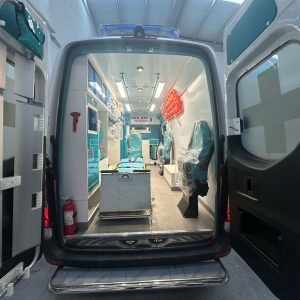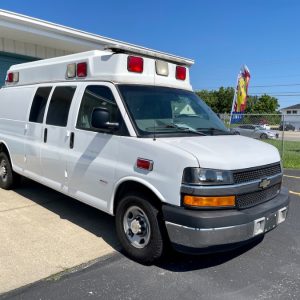Welding Technology – The Backbone of Mobile Engineering Excellence, we believe that the strength and reliability of any mobile unit—whether it’s a medical vehicle, mobile command center, refrigerated truck, or armored platform—starts with its welded structure. Our welding technology is at the core of every ICU product, ensuring structural integrity, safety, and longevity even in the most demanding conditions.
With a team of certified welders, automated systems, and internationally approved welding protocols, ICU delivers high-precision, high-strength welds that exceed industry standards for mobile vehicle manufacturing.
Why Welding Quality Matters in Mobile Structures
Every ICU product—from the vehicle subframe to interior cabinets, equipment racks, protective barriers, and modular furniture—relies on welded steel or aluminum elements for strength and durability.
High-quality welding ensures:
- Load-bearing capacity
- Vibration resistance
- Structural integrity under impact
- Long-term durability in corrosive or high-stress environments
Poor welding can lead to dangerous structural failures, premature aging, or deformation of the vehicle frame—especially under off-road conditions, temperature extremes, or load shifts.
Certified Welding Practices
At ICU, we apply internationally standardized welding procedures, including:
- ISO 3834-2 (Comprehensive Quality Requirements)
- EN 1090 (Execution of Steel Structures)
- DIN and GOST compliance for clients with specific regional requirements
All ICU welders are trained and certified, and our welding operations are conducted in compliance with strict internal quality control protocols. Welding joints undergo visual inspection, ultrasonic testing (UT), and penetrant or magnetic particle testing (PT/MT) as needed, based on the structural classification.
Types of Welding Technology at ICU
We apply various welding methods tailored to the material and component design:
1. MIG/MAG Welding (Metal Inert/Active Gas)
Used extensively for steel frame components, chassis parts, and large structural joints, MIG/MAG welding allows deep penetration and fast production speeds.
2. TIG Welding (Tungsten Inert Gas)
Ideal for aluminum, stainless steel, and thin-walled elements, TIG welding offers precise, clean, and low-spatter welds. ICU uses TIG for detailed work such as:
- Medical cabinets
- Sanitary compartments
- High-precision components
3. Spot Welding & Robotic Welding
For repetitive components like tool drawers, shelves, or bracket assemblies, ICU utilizes automated spot welding or robotic arms for consistency and efficiency.
Welding Steel, Stainless Steel, and Aluminum
Different ICU products require different materials:
- Carbon Steel: Used for frames, substructures, and heavy-duty mounts.
- Stainless Steel: Preferred for hygienic applications (medical interiors, wash basins).
- Aluminum: Applied in lightweight ambulances, roof frames, and modular furniture to reduce total vehicle weight.
Each material demands different welding techniques, shielding gases, and pre/post-treatment protocols. ICU’s workshop is fully equipped with:
- Temperature-controlled preheating systems
- Fume extraction and air filtration
- Weld positioners and rotating clamps for optimal joint access
Shot Blasting & Post-Weld Processing
After welding, all steel components are:
- Shot blasted to remove oxide, scale, and weld discoloration
- Ground and smoothed to prevent sharp edges
- Coated with anti-corrosion primers or powder coatings (see our coating process)
This post-processing ensures clean aesthetics, improved paint adhesion, and longer service life.
Weld Quality Assurance & Testing
Each weld passes through several layers of inspection:
| Inspection Type | Purpose |
|---|---|
| Visual Inspection (VT) | Detect surface cracks, undercut, porosity |
| Penetrant Testing (PT) | Reveal surface defects on non-ferrous metals |
| Magnetic Particle (MT) | Identify defects in ferromagnetic welds |
| Ultrasonic Testing (UT) | Internal flaw detection in critical joints |
| Destructive Testing | (Optional) for certification or prototyping |
Our quality control team documents each batch of welded assemblies and tracks them using serial numbers and weld maps, ensuring full traceability.
Applications Across ICU Products
Welding plays a vital role in ICU’s full product line:
● Ambulances
- Subframe reinforcements
- Equipment bracketry
- Custom oxygen tank mounts
● Mobile Laboratories
- Internal frame skeletons
- Generator platforms
- Shock-mounted instrument racks
● Command & Communication Units
- Antenna mast mounts
- Equipment enclosures
- Sliding wall supports
● Armored Units
- Welded ballistic steel panels
- Floor reinforcement
- Blast-resistant underbody structures
In each of these applications, weld quality directly impacts the safety, noise reduction, and vibration stability of the mobile unit.
Custom Welding for Custom Projects
Because ICU works on bespoke vehicle projects, we adapt our welding layouts to client-specific needs:
- Reinforced load zones for rooftop HVAC or medical stretchers
- Modular interior units with quick-replace frame connections
- Military-grade welds with extra bracing and bolt-on options
Safety & Sustainability in Welding Technology
ICU welding stations are designed for both worker safety and environmental compliance:
- Welding booths with automatic extraction and filters
- Low-spatter welding wire and gases to reduce emissions
- Regular training on safe arc operations
- Proper PPE, ventilation, and fire suppression systems
We also track energy use and material consumption, optimizing production while reducing environmental impact.
Conclusion: Welded with Precision, Built for Endurance
At ICU, our welding process isn’t just about joining metal—it’s about building the foundation of mobile resilience. Our advanced welding techniques ensure that every structure we deliver—from the smallest drawer to the largest armored shelter—performs safely, efficiently, and reliably in any condition.
Contact us today to request our welding certification documents, case studies, or discuss your next custom mobile unit project.













